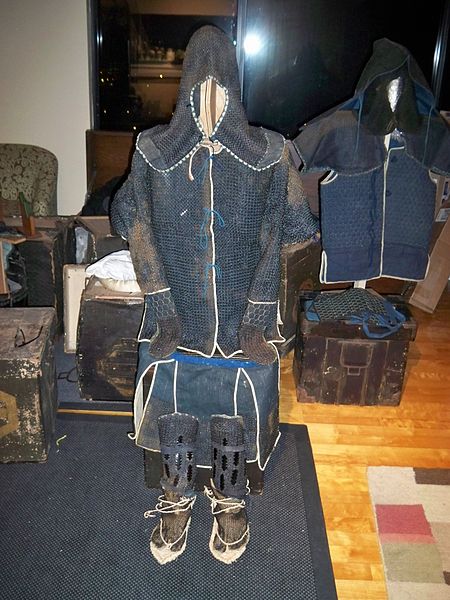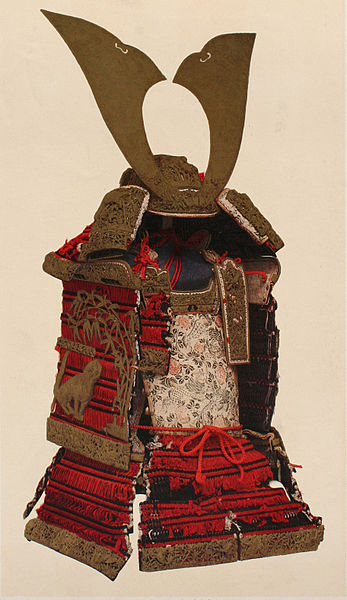Kusari (Japanese mail armour)
Kusari katabira is the Japanese term for mail armour. Kusari is a type of armour used by the samurai class and their retainers in feudal Japan. When the word kusari is used in conjunction with an armoured item, it usually means that the kusari makes up the majority of the armour defence.
Edo period Japanese (samurai) chain armour or kusari gusoku
Rare 1800s photograph showing kusari katabira (chain armour jackets) and hachi-gane (forehead protectors) with kusari shikoro (chain armour neck guards) being worn
Riveted kusari sangu
Double butted 6 in 1 kusari
Scholars agree that Japanese armour first appeared in the 4th century, with the discovery of the cuirass and basic helmets in graves. During the Heian period (794-1185), the unique Japanese samurai armour ō-yoroi and dō-maru appeared. The Japanese cuirass evolved into the more familiar style of body armour worn by the samurai known as the dou or dō, with the use of leather straps (nerigawa), and lacquer for weatherproofing. Leather and/or iron scales were also used to construct samurai armours, with leather and eventually silk lace used to connect the individual scales (kozane) of these cuirasses.
Ō-yoroi, Kamakura period, 13th-14th century, National Treasure, Kasuga Grand Shrine.
Dō-maru, Muromachi period, 15th century, Important Cultural Property, Tokyo National Museum
Gusoku Armour from the Kii Tokugawa Family. Edo period, 17th century. Minneapolis Institute of Art. In 2009, it sold for $602,500, the highest bid in Christie's history for a Japanese armour.
Gusoku Armour with a medieval revival style. Cloud dragon is drawn using maki-e technique. Edo period, 19th century, Tokyo Fuji Art Museum








